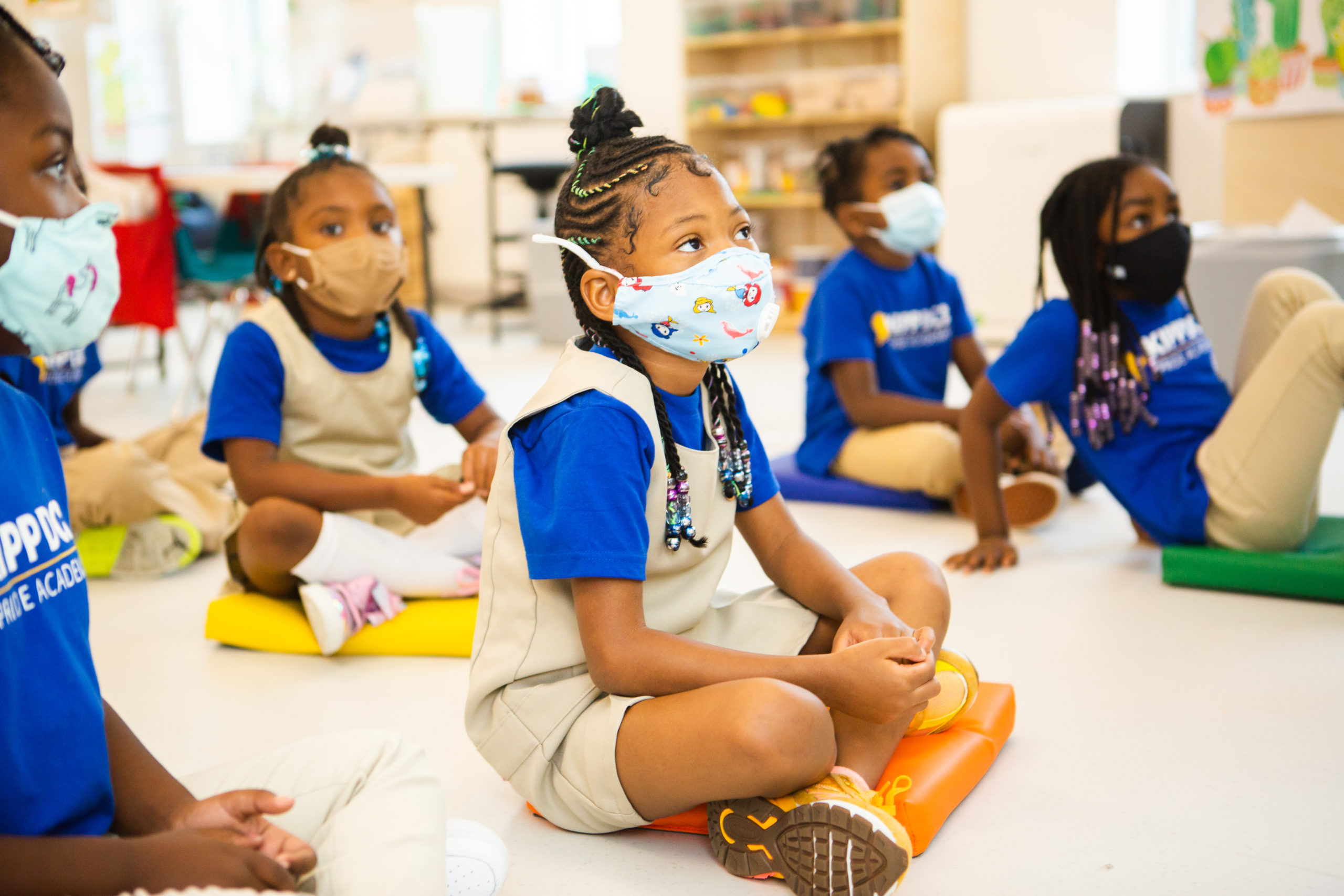
On November 21, 2024, Director of Policy and Research Emilia Calma testified in support of B25-0630, the Universal Out of School Time Amendment Act of 2023. Her testimony focuses on what research needs to be done to expand OST programs and evaluate programs. You can read her testimony below, or download a PDF copy.
Good morning, Chairperson Mendelson and members of the Committee.
My name is Emilia Calma and I am the Director of Research and Policy at the D.C. Policy Center, an independent nonpartisan think tank advancing policies for a strong, competitive, and vibrant economy in the District of Columbia. I am speaking today in support of B25-0630, the Universal Out of School Time Amendment Act of 2023.
In 2023, the D.C. Policy Center released a needs assessment of out of school time programs in the District of Columbia, focused on the 2021-2022 school year. By our estimation, there were 150 providers offering 474 subsidized afterschool and summer OST programs in school year 2021-22. Providers collectively offered 30,360 afterschool seats in OST programs at the PK3 through grade 8 level, and 6,090 seats at the high school level. In addition, there were 16,434 seats in summer programs for elementary and middle school students (24 percent of enrollment), and 15,044 seats for high school students (80 percent of enrollment), of which, approximately 8,350 (45 percent of enrollment) were seats in the MBSYEP. Out of school time programs were most frequently located in the wards in which public school students live and go to school: Wards 8, 7, 4, and 5.
In five years, the District significantly expanded out of school time (OST) program capacity. Between 2017 and 2022, afterschool OST capacity increased by 10 percent. Afterschool capacity is highest for elementary and middle school programs. Summer programming also increased substantially, especially for elementary and middle school students. In 2022, there were 16,434 seats in summer OST programs for elementary and middle school students as compared to 4,700 seats in 2017, representing an increase of 350 percent.1
OST seats by program time, school year 2021-22

Increasing opportunities for students to engage in out of school time programs could have important impacts on absenteeism, one of the biggest challenges schools currently face. Multiple studies on out of school time programs have shown that participation in OST programs is associated with increased attendance and better academic outcomes in schools.2 In addition, 79% of surveyed D.C. parents say that OST programs increase children’s excitement about learning and interest in school.3 While these statistics should be considered with caution as students that are more engaged in school are more likely to be engaged with enrichment activities,4 there is some evidence that OST programs can actually improve attendance. In a national study of students in 21st CCLC programs, almost half of students who had been chronically absent the year before improved their school day attendance. Ideally, out of school time programs can help students feel more connected to their schools and motivate them to do well in school.5 However, more research is needed on who is participating in afterschool programs, and in what types of programs. Especially for school-based programs, it is important to track which students take part in which opportunities, measure engagement over time, and strengthen the partnership between OST programs and schools.6
The Universal Out of School Time Amendment Act of 2023 implements needed changes for providers. Requiring 90 percent of grant funding to go to community based OST providers and giving providers four months’ notice of any changes to the grants process or program requirements will help providers receive more funds and comply with grant requirements. Additionally, the D.C. Policy Center supports the provisions for the biennial needs assessment outlined in the Universal Out of School Time Amendment Act of 2023. A needs assessment is an important part of understanding OST program capacity in the District and will be necessary to track expansions outlined under the strategic plan. Periodic needs assessments will be crucial to understanding the landscape of subsidized programs, what kinds of programs exist, and the geographic distribution of programs in relation to where students live and go to school.
In addition to a needs assessment, Council should also conduct a financial study of the providers. This bill outlines increases in OST seats by 10% each year. However, providers’ ability to scale up will depend on multiple factors including their finances, access to space in schools or in third party locations, and access to staff. The D.C. Policy Center completed a study in 2019, looking at funding sources for providers, how they were used, fiscal needs, and financial risks. We found that for many providers, fiscal margins were tight, limiting providers’ abilities to expand. Additionally, providers mentioned that delays in obtaining clearances for staff from the District’s Child Protective Registry negatively impacted their ability to hire needed staff, inflation and rising costs (such as for cyber insurance) had significantly increased their costs, and variable enrollment and attendance (which might be a symptom of chronic absenteeism) had an effect on their programming.7 Analysis of the finances of OST providers will provide necessary information on providers’ ability to expand and current challenges.
It will be important for the District to develop system-wide outcome measures and indicators aside from the number of seats. Currently, the measures of success in the OST commission’s strategic plan are focused on number of seats.8 We support the language in the bill to expand parameters for the OST Commission’s strategic plan to identify and remove barriers to OST participation including transportation, program quality, enrollment hurdles, and youth interest in offerings. To know the effectiveness of programs, it will also be necessary to measure other outcomes such as attendance and participation information for students, quality of programs, and if program participation is tied to outcomes such as academic performance and attendance. D.C. Council should consider tracking these outcomes to further evaluate programs.
Thank you for your time. I look forward to answering any questions you may have.
Endnotes
- Afterschool programs have increased from 33,400 seats in 2017 to 36,450 seats in 2022, or approximately a 10 percent increase. Summer programming has increased from 15,000 seats in 2017 to 31,478 seats in 2022, or a 52 percent increase. Coverage rates and seat counts from 2017 can be found in our previous OST report, Needs Assessment of Out-of-School Time Programs in the District of Columbia, found at https://www.dcpolicycenter.org/publications/needs-assessment-school-time-programs-district-columbia/.
- Harris, E., Deschenes, S., & Wallace, A. (2011). Helping older youth succeed through expanded learning opportunities. (NCLS & Harvard Family Research Project Brief Series: ELO Research, Policy, and Practice No. 1). Retrieved from http://www.hfrp.org/publications-resources/publications-series/ncsl-harvard-family-research-project-brief-series-elo-research-policy-practice/helping-older-youth-succeed-through-expanded-learning-opportunities
- Afterschool Alliance. (2024). D.C. Profile. https://www.afterschoolalliance.org/AA3PM/data/geo/District%20of%20Columbia/benefits
- Youth whose families are higher income and have high educational attainment are more likely to participate in afterschool activities, participate with greater frequency and in more activities, and are more likely to participate in enrichment programs. In contrast, youth from lower income and less educated backgrounds were more likely to participate in tutoring and were not able to get the same enrichment activities.
Harris, E., Deschenes, S., & Wallace, A. (2011). Helping older youth succeed through expanded learning opportunities. (NCLS & Harvard Family Research Project Brief Series: ELO Research, Policy, and Practice No. 1). Retrieved from http://www.hfrp.org/publications-resources/publications-series/ncsl-harvard-family-research-project-brief-series-elo-research-policy-practice/helping-older-youth-succeed-through-expanded-learning-opportunities
Bouffard, Suzanne & Wimer, Christopher & Caronongan, Pia & Little, Priscilla & Dearing, Eric & Simpkins, Sandra. (2006). Demographic Differences in Patterns of Youth Out-of-School Time Activity Participation. J Youth Dev. 1. 10.5195/JYD.2006.396.
- Afterschool Alliance factsheet. (2024). Afterschool programs increase engagement in school and reduce chronic absenteeism. https://www.afterschoolalliance.org/documents/21st%20CCLC-Absenteeism-2024.pdf
- The connection between OST programs and schools is important not just for tracking participation, but for recruitment and ensuring provider success. For example, providers frequently mentioned difficulty securing dedicated space within schools for OST programming.
Sayin, Y. and Calma, E. Needs assessment of out-of-school time programs in the District of Columbia. (2024). D.C. Policy Center. https://www.dcpolicycenter.org/publications/ost-needs-assessment/
- Sayin, Y. and Zickuhr, K. Needs Assessment of Out-of-School Time Programs in the District of Columbia. (2017). D.C. Policy Center. https://www.dcpolicycenter.org/publications/needs-assessment-school-time-programs-district-columbia/
- 2023-2026 Strategic Plan. (October 26, 2023). Learn24. https://learn24.dc.gov/sites/default/files/dc/sites/learn24/page_content/attachments/2023-2026%20Strategic%20Plan.pdf
